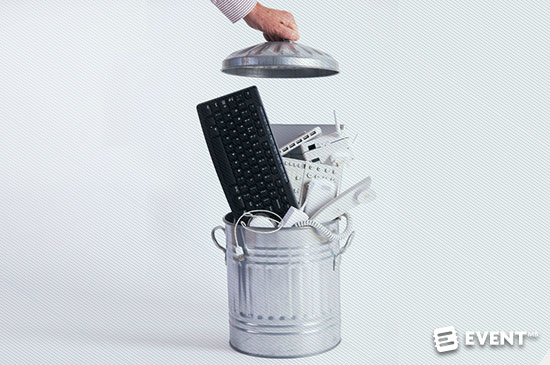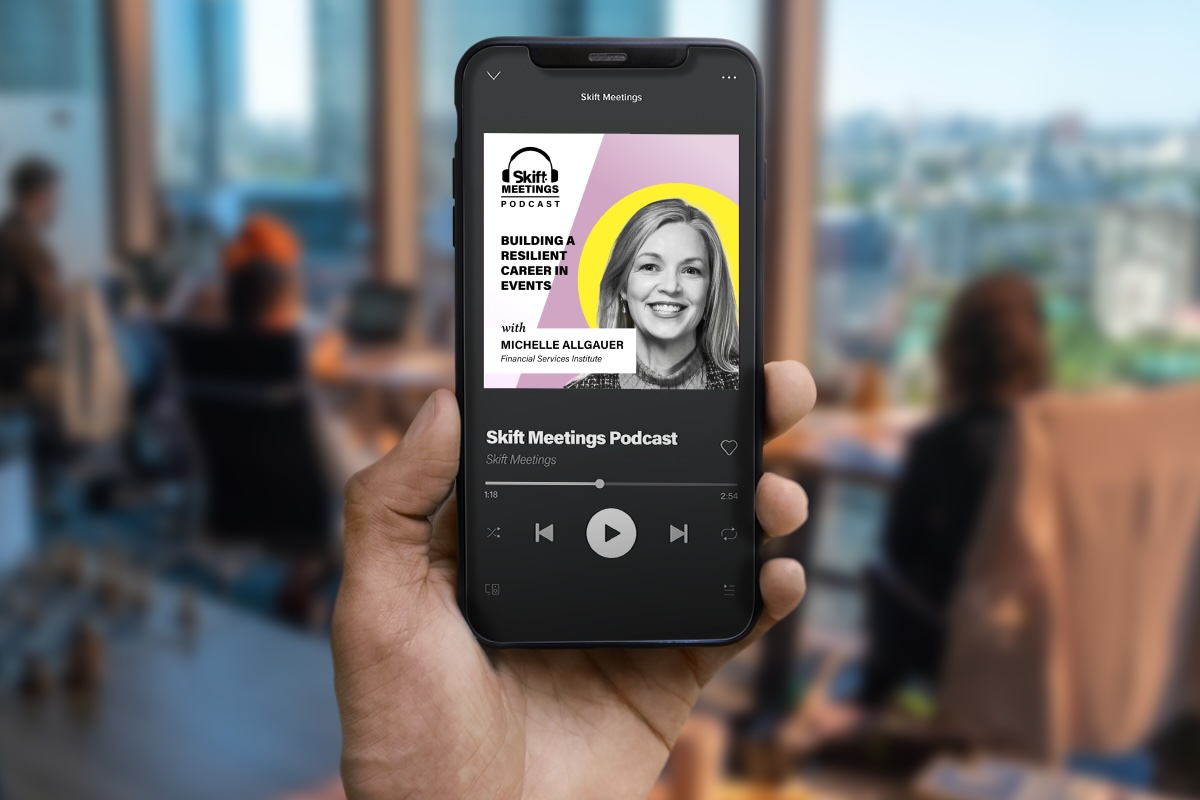Times are changing and so should our habits. Here are 14 things eventprofs are still using at events… but shouldn’t.
Don’t blame it on us if we want to have some fun. Changes are happening in our beloved industry. While it looks like we are finally dropping that stereotype of eventprofs so well portrayed in the movies of the 90’s, we can surely get rid of some other things that eventtech and clever meeting design have given a big kick in the butt to.
So join us in this ride looking at 14 things we can do without nowadays. Of course you may be emotionally attached to some of them, but even the kid in Toy Story let his Woody go. Our industry has grown up, we can do better.
##abovethefold##
1. Paper Badges

Badges have traditionally been the biggest lost opportunity in events. Printouts of very unuseful information that generate awkward looks at one another. Of course you can get them sponsored and of course you need them for security, but there must me a better way.
Badges require a heavy logistic effort and carry a lot of waste when not recycled. They are also very dumb. Even the latest QR code introduction does not make them more appealing. Technically they are just a piece of paper and we are not impressed.
You can do better. Mobile Apps, beacons, RFID, NFC badges. The possibilities are endless. Badges become the remote control of your event. They let you check into places by just walking by. You can purchase merchandise, drinks, food. You can participate in games, you can quickly share content on social media. Smart badges offer powerful real time analytics and they offer incredible feedback mechanisms.
2. PowerPoint

Used at events since being created 26 years ago, that alone should tell a story. Although of course the features have evolved, we can’t take anymore zoom-in transitions, twirling animations and pie charts. When the objective of the session seems just to be to read slides together, that’s when you start hearing attendees sighing all over the room. That’s when you know Death by PPT is taking over. Slides in general can be a great visual tool to give some tangibility to a talk, but seriously, what is the percentage of good slides you see at events?
You can do better. We won’t suggest a list of alternatives to PowerPoint. Get creative and think about other ways to get speakers to illustrate their point. Mix the types of media you can use: video, images, sounds, objects. In some types of events slides will always be necessary, they are almost expected by the audience. You can make a difference as an event professional. You can give precise guidelines or even coaching to your speaker as to how they need to use and not abuse the tool. It takes a lot of charisma and experience to talk without slides and experience. Get the speakers to use slides as part of the new speaking mix – mobile app, live interaction tool, throwable or app powered mic, props, music. The more the merrier.
3. Showguides
It always astounds us at events to hear complaints about the lack of a showguide – a print programme with the highlights of the show. Apparently you can’t just rely on apps. Apparently you will never be able to take a printed guide completely away. Let’s have a reality check. What’s good about having a static print guide that is usually the size of a phone book, cost gazillions to print, nobody wants to sponsor and leaves a carbon footprint that should make you embarrassed?
Why? Because some people will never do without.
We are all about respecting each and every attendee. We are also about pushing tech tools when there is an audience and appetite for that. In this day and age even your Grandma is on Facebook, so don’t say people cannot use their mobile to download an event app.
You can do better than that. Event Mobile Apps are a multi billion business. There must be a reason for that. More and more attendees download apps for events. Of course you can keep having your show guide if you really need to and if your audience is not a match. But if you are not 100% behind your app, nobody will be. We have witnessed events that go above and beyond and make the app a true necessity. A print guide then becomes irrelevant. Be wise, use interactive displays, social media walls, newsreels. There is still a place for print but that is not within the event industry.
4. Business Cards
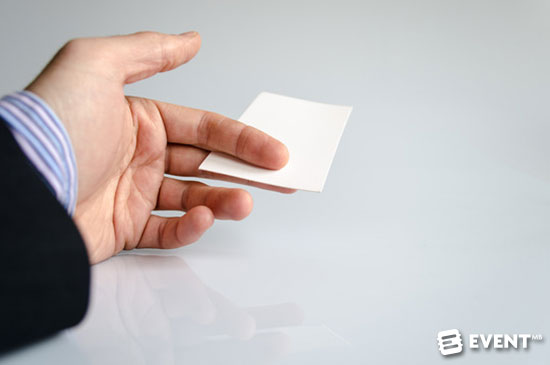
For ever it has been expected that if you go to a networking event you must take a stack of business cards as it is the “done thing”. Think about it though. Do we really need a business card to connect with people? There are so many better ways to exchange information at events. Smart event professionals make sure that whether you have card or not, you can still network.
You can do better. Invite attendees to take advantage of social networks and optimize your network with the existing technologies. Use smart badges, contact business cards, beacon business cards. You name it. The alternatives are so many our head hurts.
Of course there will always be some people that will use them blah blah blah blah blah and blah. The thing is that you, as an event professional, can encourage attendees to use better ways to connect rather than producing an incredible amount of waste.
5. Feedback Forms
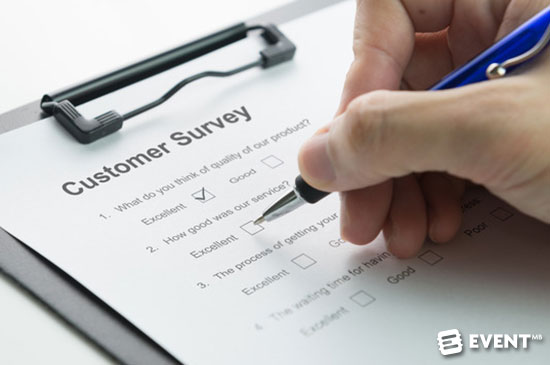
Feedback is extremely valuable, we won’t argue with that. But if you hand out paper feedback forms at the end of your event, desperately coerce people to complete and return them and then spend time deciphering bad handwriting and typing up all the results one by one in Excel… is this really the best use of your time and resources?
Not only is this a waste of trees but are these “forced” responses reliable and is this immediate feedback even worth the effort? In the Event App Bible Adrian Segar suggests that we need to be looking for evaluation gathered over a longer term to really know how successful our event was. You need to optimize this important process. But you have known that for a long time already!
You can do better. There are myriads of digital based solutions today that take away the pain of typing up the responses. From touch screen surveys at the event, to surveys pushed to attendees via the event app, to social media, to online survey tools; create opportunities for your participants to share their thoughts about their experience. Increase the response rate by compelling them to share their feedback to get their certificate of attendance, or by gamifying the process and offering lucrative prizes, such as tickets to next years event!.
6. Q&A
By allowing some time for Q&As at the end of a session, in theory you can encourage your participants to share their own knowledge and go deeper behind the speaker’s presentation. If executed badly or just done for the sake of it though it can be unimaginative, dull or sometimes infuriating. Time is lost when the microphone travels between attendees, someone asks a meaningless question, hogs the mic or the question isn’t heard by the whole room. At times like these the audience might be forgiven for thinking they are in a timewarp.
You can do better. Microphones can be fun! Use throwable microphones or invest in an app based microphone operated via your attendees smartphones. Shake it up and do questions differently or build into the event programme questions to the speaker with a dedicated Ask Me Anything session.
Invest in a live display Q&A feed to encourage all audience members to participate, not just the most confident speakers, and enable the questions to be moderated and ‘voted up’ to determine which questions are most popular and given prominence. Speakers or panel members may have more time to formulate their answer.
Don’t ignore the wisdom of the crowd and think the speakers have all the answers though. Put the power in the hands of your participants by allowing them to jump in the discussion and share their own knowledge for a richer experience for everyone.
7. Registration Desks
The first interaction with your event is often the check-in process so it is important that you get it right. Tables of counters, rows of badges, long queues, clueless and untrained temp staff and confusion may not give the best impression or welcome as people arrive on site at your event. Your participants are itching to dive right in or get a coffee, they don’t want to waste time in the entrance lobby.
You can do better. By setting up desks you are creating an instant barrier between your staff and the event guests and as soon as it gets busy people are forced to queue. Consider using tablet devices and standing to welcome your participants wherever the crowds need you most.
Scan a ticket or type a name to trigger their badge being printed automatically, rather than searching through upside down name badges to try to find an elusive badge not in alphabetical order. Nothing gives away how many people haven’t bothered to turn up and screams “waste” more than pre-printed badges!
Self service stations might also be a solution, as long as someone is still on hand to reassure those that are less tech-savvy how to use this modern-fangled technology. Whether you use technology or not the biggest request is that you have knowledgeable, well-briefed, friendly staff as your registration staff get all possible questions asked to them and “I’m not sure” is simply not an acceptable answer.
8. Walkie Talkies
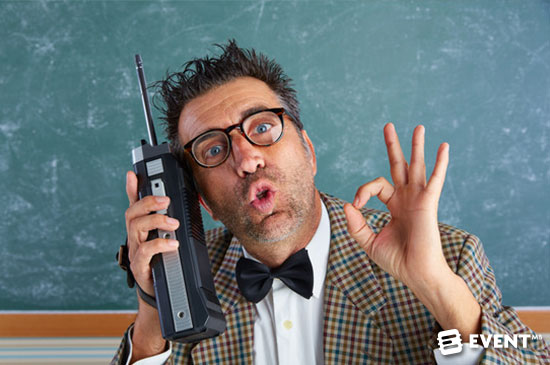
Ah, good old walkie talkies. Clunky, heavy, inconvenient, often misused, with messages missed or overheard by the wrong people – why do some eventprofs still rely heavily on them in 2016, despite their drawbacks. Surely time to say goodbye?
You can do better. Unless you are planning an event in a venue that doesn’t provide any WiFi and phone signal, there are several communications apps that can ensure a reliable and smooth connection between your team members and replace your event radios. From one-on-one private chat or group video or voice calls, to links and document sharing, these solutions can answer all your communications needs.
Provide your team with smartphones or tablets, et voilà! Instead of lugging an event radio and mobile phone everywhere just focus on one compact solution.
Just remember your chargers and emergency power packs. Over and out.
9. Ring Binders Full of Paper
Keeping all the vital details regarding your event, such as guest lists, invoices, contracts, timelines and budgets, is simply inefficient. You guard your event binder with your life, but the information contained is already out of date and relying on a folder means that it can be easy to lose, too slow to find the answer or update any information, and you can quickly look like a crazy person scanning through all your documents.
You don’t want this to impact on your image, or to be responsible for a data protection breach. And think of all the trees! Today going paperless is a winner on all counts.
You can do better. Use a cloud based project planner – whether you use a dedicated event management software or your team collaborates through online docs – this will ensure you have the most current data at your fingertips. Not only will your content be backed-up automatically, but you will be able to find any piece of information instantly and access your documents on any device. Carrying your laptop, tablet or even your smartphone, looks much better than a bursting binder, believe me!
10. Cash

Your venue or site may not offer an ATM or card payments on site (specifically festivals and other outdoor events), but you have to plan for attendees that don’t bring enough money with them or burn through their cash quicker than anticipated. Keep people spending and keep your traders happy. Avoiding cash on site can also prevent theft and crime issues and excessively long queues at serving counters.
You can do better. You don’t want to limit the event revenue generated so think about how to go cashless on site. You can of course provide mobile temporary cash points but can you do better than that? Encourage your traders to make mobile card payment systems available, such as solutions which work via a mobile phone connection. Many festivals operate a simple token system where tokens are exchanged for food and drinks.
Better still, RFID solutions are already implemented at some events, so why not join the trend? Attendees need to link their credit card to their electronic wristband (or ring) and can purchase anything with just a touch of the wrist (or finger). Bracelets are safe and solutions often associate them with a pin code or fingerprint to secure the system.
11. Speakers
There are a lot of amazing speakers out there. There are also a lot of average speakers. Sometimes speakers will express their views on situations they haven’t actually personally experienced and lose credibility with the audience or not nail the point they were trying to put across. Sometimes the event planner simply hasn’t briefed them well enough and should take the blame!
The world is changing and people often value the word of their peers more than that of experts anyway, think about the tremendous success of Trip Advisor. We will believe someone with whom we can relate to more than a travel expert. And while speakers are still generally the main ingredient of a conference, perhaps there are some alternatives you can use to mix up your programme and provide your attendees with a more valuable experience.
You can do better. Think of inventive substitute formats, rather than always relying on a speaker. Use video, interviews, small group work, forum theatre, unconference formats, or invite the audience on stage spontaneously or interview them.
It can be much more powerful to hear from the subjects themselves even if they are not a polished speaker, it makes it more human. Workshops are another powerful way to convey content, and enable attendees to learn directly from their experiences and from the learnings of others. Modern tech twists to traditional meeting formats are covered in Engaging Events, our latest free report.
12. To Take Everything So Seriously

Business events can be stressful for your attendees. From travelling away from home, to the social pressure which comes with meeting new people, being too serious or formal might only reinforce your attendees’ apprehension. Furthermore delivering a message in a fun way can actually make information stick more effectively, in the long run, after the event.
You can do better. Commit to doing things differently. Create a relaxing atmosphere and promote your participants’ well being by incorporating games, humor and fun within your event. Reverse your attendees’ mindset by offering them an opportunity to leave their responsibilities behind and try something new. Encourage your sponsors to unbooth their units and welcome their clients in an enticing and comfortable set up. Team games can not only be a great ice-breaker but also promote networking and cooperation.
13. Maps
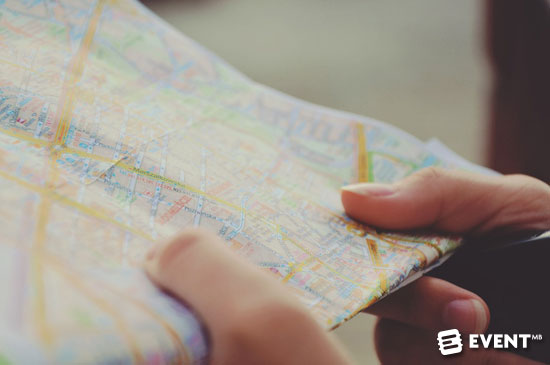
Whether you are planning a festival, an exhibition or a conference, providing directions and a visual representation of your floor plan or site layout is always appreciated so attendees can easily understand where they are and where they are going. Not everyone will relate to the written word. The usual problem though is that your floor plan or table plan will suffer some last minute modifications which will be impossible to introduce once the map or seating plan is printed.
You can do better. Going digital will save you from this situation. Touchscreens, interactive displays with 3D floor plans or event apps featuring geolocation will not only be very handy for you when you will need to make amendments, but will also provide an additional opportunity to offer more interactivity to your participants and perhaps generate some additional sponsorship revenue.
14. Staffing Agencies
Delegating your staffing requirements to an agency may seem easy, but unless you trust them with your life, you might find yourself on the morning of your event with totally unsuitable staff and no time to make changes.
You can do better. Event planners are cutting out their intermediaries more and more, and doing everything directly. Control freak by nature, perhaps, but they are building a pool of trusted staff and suppliers that they know they can rely on. Relevant online platforms can directly connect available staff and events, guaranteeing reliable personnel who have been reviewed by other event planners to ensure you get the most professional and relevant staff for your event.
In Conclusion
As event professionals we are always short on time and will sometimes rely on traditional solutions as it seems like the quickest or easiest thing to do. Maybe we have always done it that way and taking the leap to do things differently fills you with fear. But so we can focus on the important content and real experience of our event, rather than the admin and logistics, now is the time to make the change.
Push your boundaries and you will realize that the power of your content can be amplified if you update your tools and choose the best modern solutions to support your organization.
